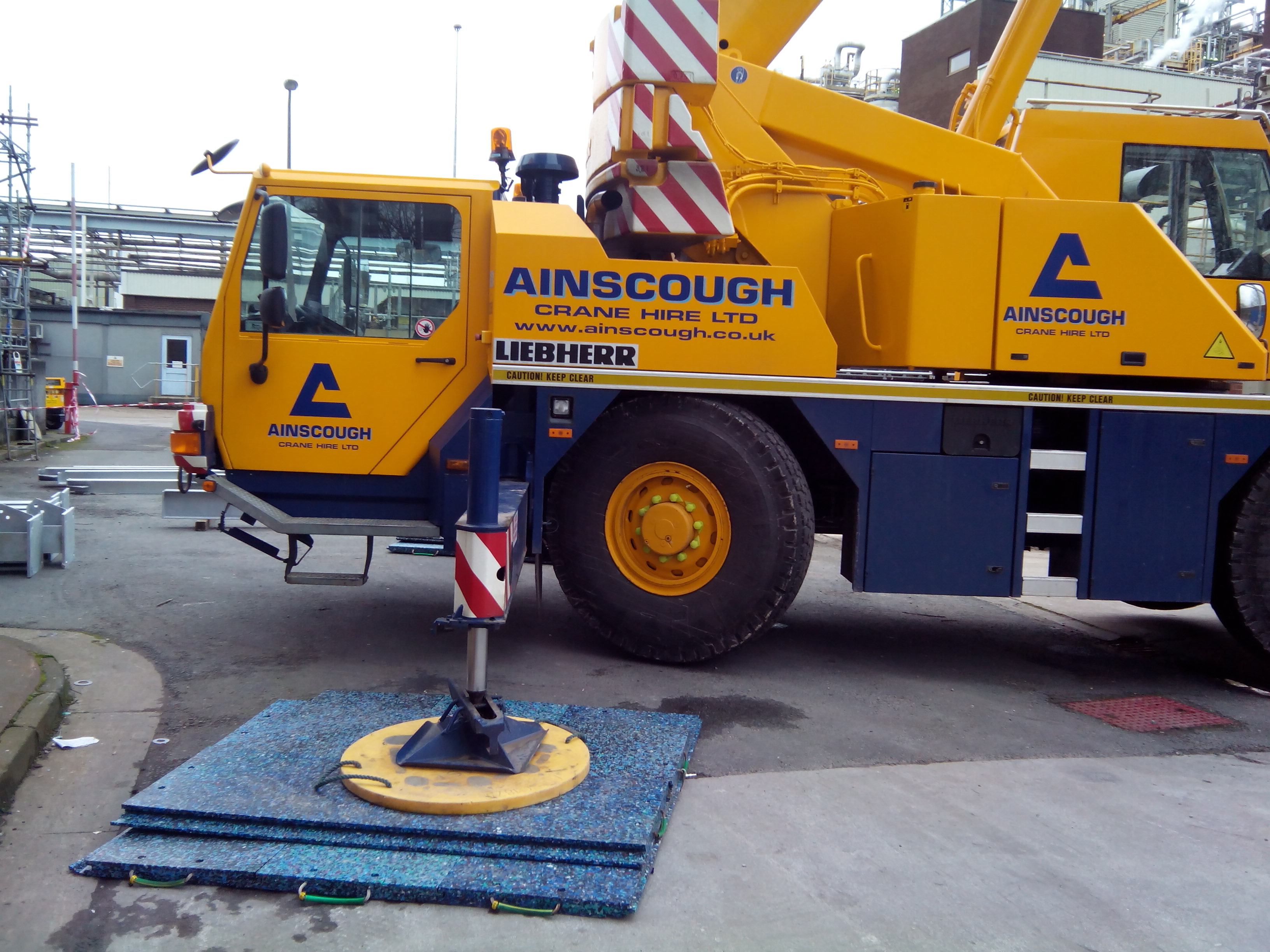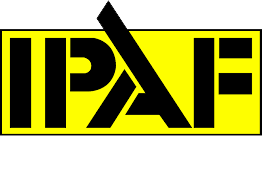Ensuring Safety from the Ground Up: 6 Handy Tips To Assess Site Ground Conditions
Ensuring that access platforms and cranes are as stable as possible is vital if they are to be used safely and effectively. This makes it extremely important that you know how to accurately assess ground conditions and understand what measures to take.
In this guide, we provide answers to some of the most commonly-asked questions about ground conditions.
1. When do I need to assess ground conditions? Is it only when using a platform that relies on outriggers, jacks, or stabilisers?
The short answer is, no! In fact, it is considered good practice to assess the ground conditions, whatever type of platform you are using – this could be boom lifts, scissors, mast lifts, vehicle-mounts, or towable lifts. Our advice is that well before you set up or attempt to operate your equipment, you conduct a site assessment, so that you’re aware of terrain conditions.
Many self-propelled machines, such as Genie booms, Niftylift booms, Genie scissors and MEC rough terrain scissors can be driven while elevated. If you don’t check the terrain before driving over it, you are risking a loss of stability that could result in the platform toppling over. For example, moving from hard ground to much softer ground can cause a self-propelled lift to overturn.
2. What is the best way to spread the ground pressure of outriggers, stabilisers, or jacks?
The surface area of the ‘foot’ of an outrigger is often small, so it is important to spread the load in order to maximise stability. This allows the outrigger to withstand high pressures on gravel, soil and paved areas, without compromising on the safety of the machine.
The spreader plates sold by Outriggerpads help to reduce the pressure to an acceptable level.
IPAF’s excellent Spread the Load campaign advises that “spreader plates should always be used with boom-type mobile elevating work platforms (MEWPs) when fully supported on their outriggers.
Spreader plates should be used with all other MEWPs that have outriggers unless a risk assessment indicates they are not necessary”.
In addition, very poor ground conditions may require additional foundations, such as ground mats, timber mats, proprietary mats, steel grillages or concrete pads.
3. Surely I don’t need to inspect the terrain if I am driving a self-propelled machine in the stowed position?
The lifting industry prides itself on adhering to best practice. In this instance, best practice is to assess the ground conditions before driving, even if you’re only driving the machine in the stowed position. While driving from stowed significantly reduces the risk of toppling, the machine could still easily get stuck in unexpected soft or boggy ground. This can cause delays on site while you wait for your access platform or crane to be rescued - and you may end up having to pay recovery costs.
4. What are the most common ground condition hazards?
The most common ground condition hazards that you might encounter include the following:
Uncompacted fill
This is the term for soil or other fill material placed into backfilled trench without being compacted. One tell-tale sign is visible cracks along the line of the trench.
Nearby excavations
Industry guidance advises you to avoid positioning mobile cranes or powered access platforms close to the edge of a trench or other excavation, as these are likely to collapse without warning. If the machine needs to be used in such a way that its outriggers or wheels will be close to the edge of such a feature, IPAF recommends that a competent geotechnical engineer carries out an assessment before allowing the platform to be positioned, set up and operated.
Floors, cellars and basements
Many floors, cellars and basements are simply not designed to bear the weight of a mobile crane or a powered access platform. Therefore it is extremely important to take into account the strength of floors and location of cellars/basements before positioning a machine in this type of area.
Paved Areas
Looks can be deceiving! Paved areas can look deceptively strong, but the ground beneath them could well be weak. In particular, you should consider footpaths as suspect, because there is often weaker ground or shallow services hidden below.
Underground Services
Sewers, drains, manholes, and gas and water mains can all be impacted by the weight of a platform. They can even collapse, causing the platform to become unstable or overturn.
Weather Conditions
Wherever you work, the weather can be a major factor. Heavy or prolonged rain can alter ground conditions and cause sinking of outriggers or wheels. If you suspect that the ground supporting a platform is getting softer, you should make regular checks on the machine level and make any appropriate adjustments to outriggers, spreader plates and pads. Also make regular checks when frozen ground is thawing out, since it can appear to be much firmer than it actually is.
5. How are the different types of ground classified?
The following industry classifications apply:
Greenfield sites
Areas of high-risk on Greenfield sites include fields next to rivers, estuaries and flood plains. These areas can often have soft ground and high water tables.
Brownfield sites
Because of their nature, there can be huge variables on brownfield sites. In particular, problems could arise from hidden basements and cellars, underground storage tanks, and backfilled pits.
Pavement and roads
Carefully inspect roads and use your judgement. For example, a main road that is regularly used by trucks or heavy plant, without showing any major signs of distress, should be of less concern than a car park, for example, or a route through a housing estate. Footpaths are definitely worth close inspection, as the surface can be thin – and there could be services or weak ground beneath. The edges of paved areas are also a weak point and you should take extra care around them.
Town and city centres
The requirements of modern urban living mean that there will be a higher risk of underground hazards. These can include live services, manholes, drains, cellars, basements, sewers, and even poorly backfilled trenches.
Beaches
Beaches can be tricky places on which to work. Patches of sand with low density can easily shift under an outrigger or a wheel. The variable water table can also create challenges.
6. When I am in the platform, how do I monitor changes in ground conditions?
All modern powered access platforms are fitted with level sensors. Pay attention to the indicators and act immediately if any alerts or warning lights are activated. If the level indicator tells you that you are exceeding the machine’s operating limits, then you should immediately stop, lower the platform, and reset the machine until the indicators confirm that it is in a level position. If you are on soft ground and fear that outriggers or stabilisers could sink during operation, make regular checks and adjust accordingly.
Further Information
The IPAF website has a superb resource library, including advice on assessing ground conditions:
http://www.ipaf.org/en/publications/technical-guidance-notes/
Outriggerpads provides a comprehensive range of ground mats, outrigger pads and spreader plates for powered access platforms, cranes and other mobile plant:
https://www.outriggerpads.co.uk
The Outriggerpads calculator also helps you to work out which spreader plates are most suitable for your fleet:
http://calculator.outriggerpads.co.uk/
For detailed advice on assessment of ground conditions, calculation of bearing pressure and selection of spreader plates, read Crane Stability on Site, C703, 2003, published by the Construction Industry Research and Information Association (CIRIA).
You can also find additional guidance in the British Standards publication
BS 8460:2005 Safe use of MEWPs — Code of practice.
Footer
Outriggerpads
Name of Company
TVH UK Limited
Registration number
03859070
VAT number
GB747356701
Address
Zortech Avenue, Kidderminster, DY11 7DY
© 2025 Outriggerpads is a brand of TVH Parts Holding NV. All rights reserved. Privacy | T&Cs | Cookies
Website supported by Isev.



